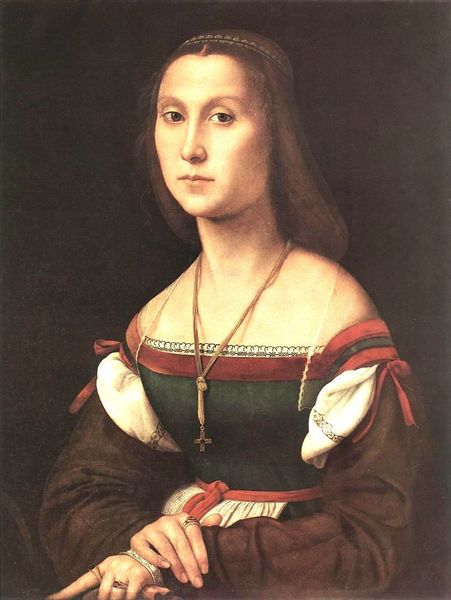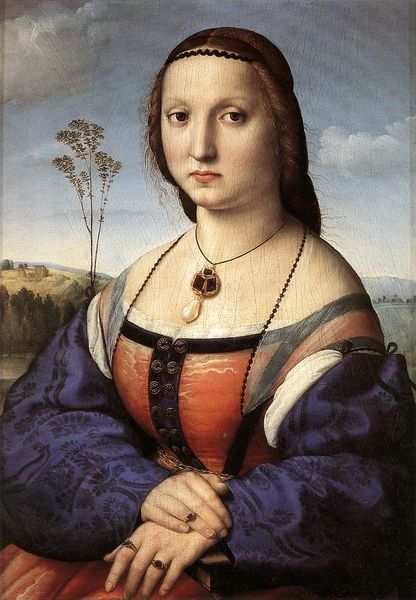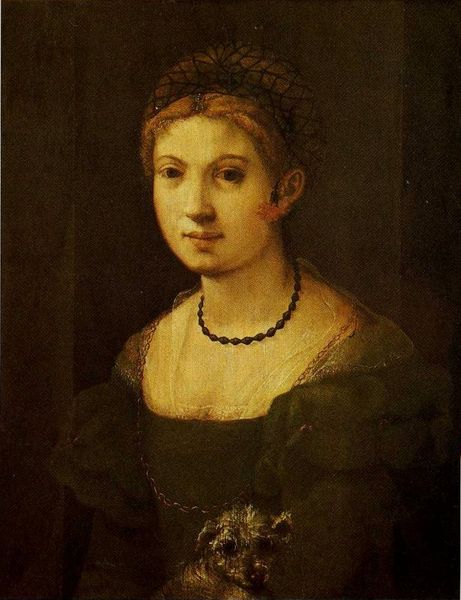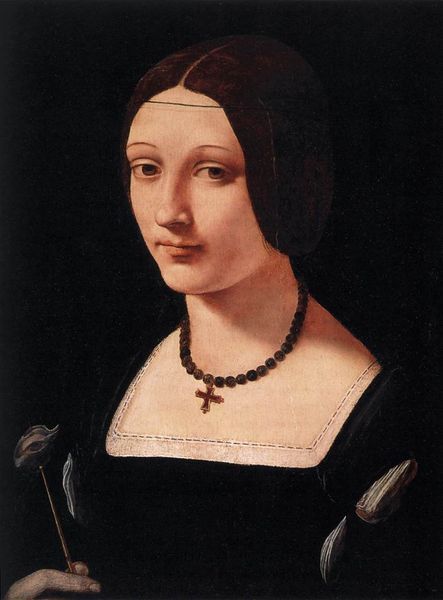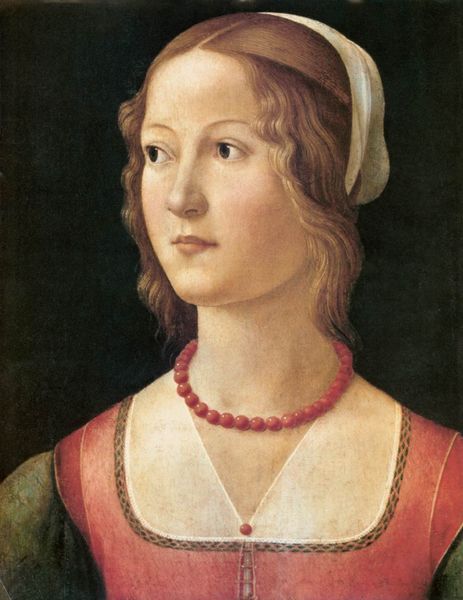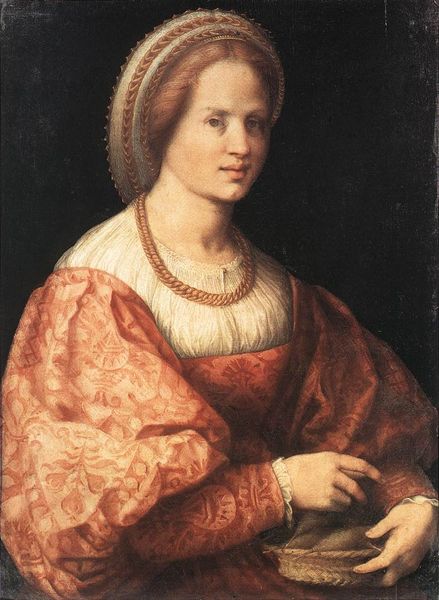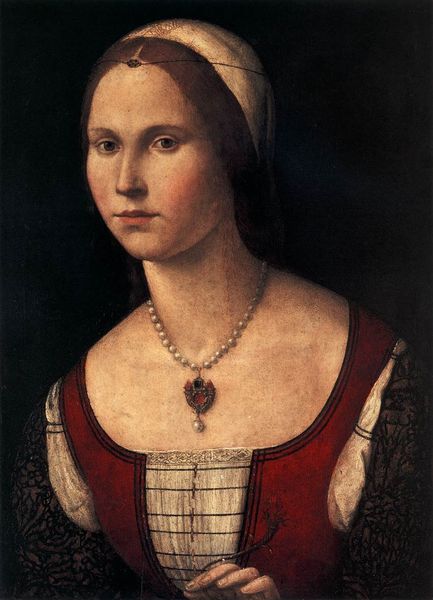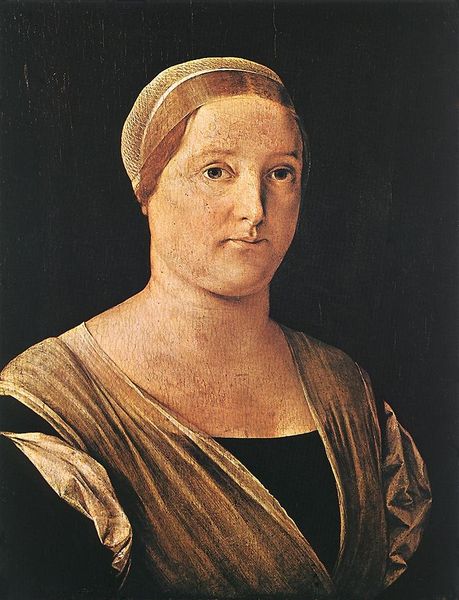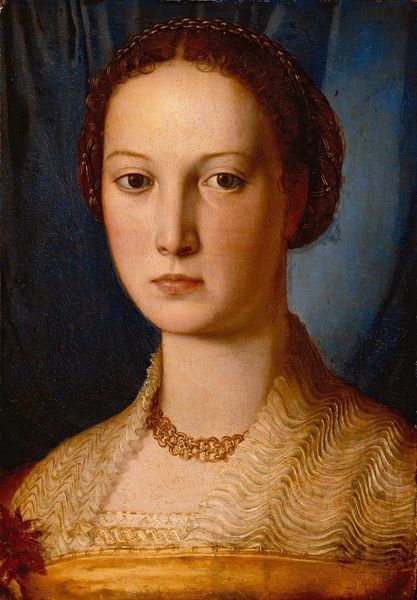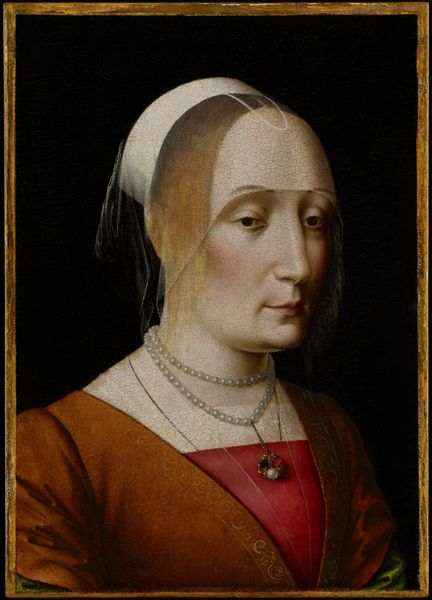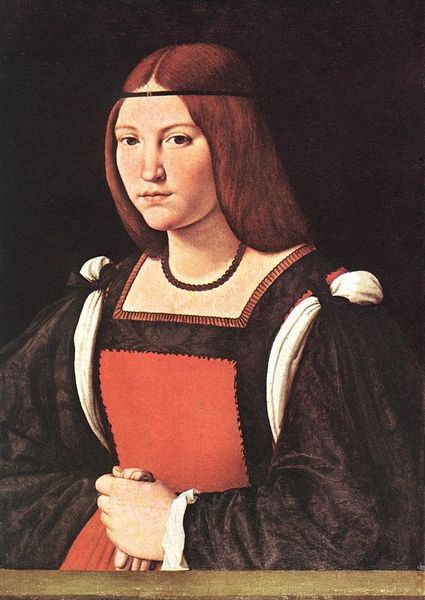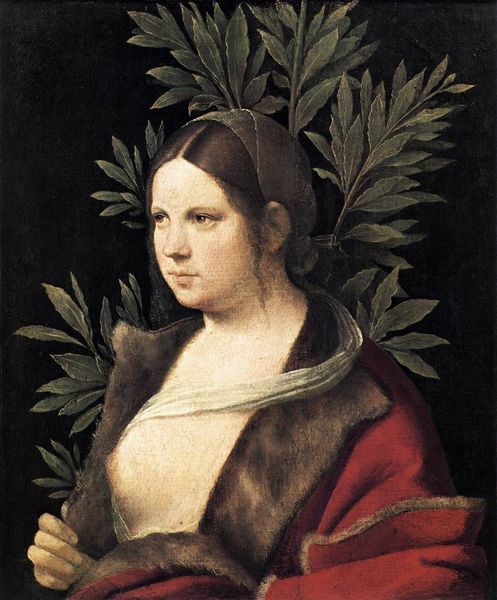
oil-paint
#
portrait
#
oil-paint
#
history-painting
#
italian-renaissance
#
realism
Dimensions: 66 x 52 cm
Copyright: Public domain
Curator: Raphael's “The Pregnant Woman," painted circa 1507, is an exquisite example of Italian Renaissance portraiture, currently housed here in the Palazzo Pitti. Editor: Immediately, I'm struck by the stillness of the painting. The subject's reserved gaze, coupled with her clasped hands, create an atmosphere of quiet contemplation, of secrets held. Curator: Consider the artist's technical skill. Raphael's meticulous use of oil paint captures the textures of her clothing – the richness of the red sleeves, the delicate gathering of her hair. And look at the subtle modelling of her face! It speaks to the intense labor that went into such courtly commissions, with material scarcity making paintings like these extremely valuable luxury products. Editor: Absolutely. And the social context is crucial. This is a woman whose identity is largely tied to her role as a potential mother and wife. There's a quiet agency, perhaps even a gentle challenge, in her eyes. She’s contained within societal expectations but subtly transcends them. Curator: The historical evidence suggests it’s the portrait of a very wealthy member of Florentine society, made possibly upon the occasion of her wedding or some other type of rite of passage, like her pregnancy. A demonstration of dynastic power expressed through materiality, as if to signal the perpetuation of family wealth and status. Editor: The dark background accentuates her fair skin and emphasizes her position within this elite echelon. It allows for a sharp focus on her figure but erases so much of the lived social fabric around her – its very exclusion acts to spotlight inequities within her social hierarchy. Curator: It is important to note, also, Raphael’s mastery of the oil paint medium in Florence. This artwork stands as evidence of the innovative, creative labor of both artist and workshop during the Renaissance in this period and the complex manufacturing processes involved in producing pigments, preparing the support, and then completing the act of image making itself. Editor: So while on one level, “The Pregnant Woman” might reflect accepted archetypes of femininity of its time, its power also lies in prompting us to question those expectations and contemplate her inner world, as framed by these patriarchal parameters of possibility and existence. Curator: Thank you for these poignant insights. Editor: Thank you. Considering "The Pregnant Woman" invites contemplation of art as both craft and carrier of critical conversations across time.
Comments
No comments
Be the first to comment and join the conversation on the ultimate creative platform.
